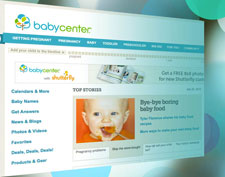
Of course you want your business to be all it can be, but are you really doing the footwork? Many women-owned businesses aren’t, as I discussed recently.
With social media, customer service has been redefined for both online and brick-and-mortar stores.
For e-commerce businesses — retail, professional or B2B — a website is only the beginning. Growth depends on visibility, “findability,” and adding value that entices customers to opt-in. That value is defined by information and community.
Being a retailer without brick and mortar is about YouTube “how-to” videos and setting up online communities. Women should excel at this but, as a group, they aren’t.
Techies, people setting up new businesses, those buying for a family, and those planning $300,000 weddings — just about every customer you want to attract — look online for products and services, talk about them there, and then buy.
How does that change customer service? For starters, customers comparison shop for both price and features. They check out peer reviews and add their own opinions to product descriptions. If your business delivers late, doesn’t respond to complaints or has an inferior product, millions of potential customers know about it instantly.
Zappos is a good model for growing by offering more customer service than the competition. Customers get free shipping and returns. But they also get a friendly face: videos of products in use — demonstrated by employees, not models — and customer reviews. Zappos has a spunky personality that gives it an extra edge.
In the world of e-commerce, you need more than friendly shipping; you need:
- information videos
- discussions that make the customer feel at home when buying from you
- personality
- values the customer can feel good about
Many small businesses are starting out with only this online presence, enhanced by Facebook pages, blogs, and tweets. But large or small, your customer wants to be well-informed, looked after, and part of something. An example of small is Woolly Bottoms, which sells hand-made wool products for babies. The products are so popular that they sell out almost instantly.
Owner Shannon Foster started the business so she could stay at home with her child. She has a Facebook page where she shares such nuggets as re-stocking will be delayed because she decided to play with her baby. People who shop with her are shopping with someone they know and like.
A larger provider in this space is a division of Johnson & Johnson, BabyCenter. They’re a great example of how to provide professional (not just peer) advice, forums, news reports and, oh, yes, products for sale.
Brick-and-mortar stores have to change their ways as well. An online presence is mandatory whether you fix computers or franchise home care services. People look first online. They want to see a website that gives them a sense of who you are and what your values are, as well as how to find or contact you.
A smile and a greeter will no longer be enough. Customers are much more knowledgeable. You’ll need expert staff, not minimum wage workers with minimum training.
The Pump Station in Santa Monica, CA is one such place, where customers — nursing mothers — are served by staff who are experienced mothers, some with medical backgrounds, and who really care about the babies and moms. The prices are higher but the value-added is worth it to their customers.
And you’ll probably have to go beyond an online presence to an online shopping cart. Even hair salons can offer products and gift cards.
“I love having a store and seeing customers, but I’m not going to grow by just being corner store,” says Ann Cantrell, owner of Annie’s Blue Ribbon General Store. She uses Facebook, blogs, and emails to market her products. And 30% of her sales are online, expanding her market far beyond her Brooklyn neighborhood.
Growth in 2012 and beyond will depend on understanding and using online marketing. If you don’t have a plan to do that, make one. Do your homework. Talk with your staff. Explore the options. Then make yourself a cyber force to be reckoned with.
The 2011 online marketing survey conducted by Ventureneer and Message Medium, Ditch Digital Dabbling: How Small Businesses + Nonprofits Can Master Online Marketing, gathered extensive data and benchmarks about how small businesses and nonprofits use online marketing and whether they are seeing results. Visit for highlights.
Please note that that Vistas will be taking a break for the Labor Day holiday and not publishing the weeks of August 27 and September 3.
